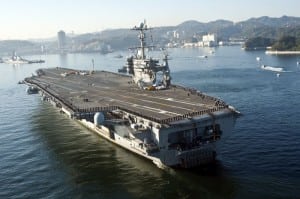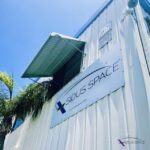
Huntington Ingalls Industries [HII] on Thursday reported higher earnings and sales driven by a favorable pension adjustment, better performance on its LPD amphibious ship programs, lower risk on attack submarine programs and the contribution from acquisitions. Net income increased 20 percent to $96 million, $1.96 earnings per share (EPS), from $69 million ($1.36 EPS) a year ago, easily topping consensus estimates of $1.84 EPS. A swing to $21 million in pension income versus a $13 million loss a year ago…

 By
By 











